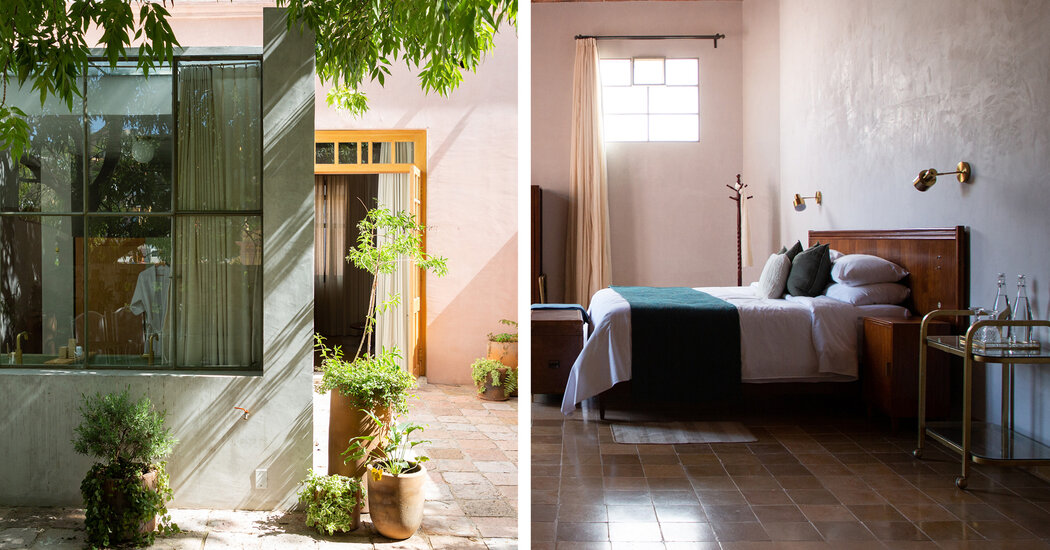Seen from the outside, Red Jane, a new bakery in the center of Chania, a Greek port city on the island of Crete, looks like a Berlin nightclub, with no obvious sign and a concrete facade covered in graffiti. Inside, it might pass for a New York boutique: There are Italian tiles on the floor and an exposed-brick ceiling and on a long red marble counter, lit by minimalist pendant lamps, pastries are laid out like jewels in a glass vitrine. Owned by Nikos Tsepetis, the hotelier behind the nearby beach resort Ammos (a favorite of the art and design crowd), the space is the first fully realized interiors project overseen by the London-based lighting and furniture designer Michael Anastassiades. Eyal Schwartz, the former head baker and co-owner of London’s E5 Bakehouse, created the menu. On its opening day this month, Red Jane sold out of its chocolate-filled croissants, koulouri (Greek sesame-topped bagels) and baklava swirls by noon. Locals lingered for an hour after, despite the fact that Tsepetis and Anastassiades designed the space without tables. redjaneproject.com.
Visit This
Remedios Varo’s Surrealist Paintings, on View in Chicago
The Catalonia-born Surrealist painter Remedios Varo was named after the Virgen de los Remedios, or the “Virgin of the Remedies,” who was believed to have protected and healed Spanish conquistadores during their invasion of the Aztec capital of Tenochtitlán, present-day Mexico City. Varo, too, was drawn to Mexico City when, as a young artist living in Paris in 1941, she fled the Nazi invasion of France via Marseille. In Mexico, she produced her most celebrated canvases. The Art Institute of Chicago’s exhibition “Remedios Varo: Science Fictions” — the first major solo show in the United States dedicated to the artist in more than 20 years — is an assemblage of dozens of Varo’s paintings, drawings and ephemera from that prolific period when she worked alongside her fellow Surrealist expatriates Leonora Carrington and Kati Horna within Mexico City’s vibrant Colonia Roma neighborhood. (The trio were known collectively as the “three witches.”) Varo’s fascination with alchemy, pseudoscience and theosophy — an esoteric religion founded in North America in the late 19th century — are on full display in paintings such as “Star Catcher” (1956), which combines elements of medieval portraiture with cosmic fantasy: A figure in glowing robes holds a net in one hand and a small cage with a crescent moon in…
Click Here to Read the Full Original Article at NYT > Travel…
